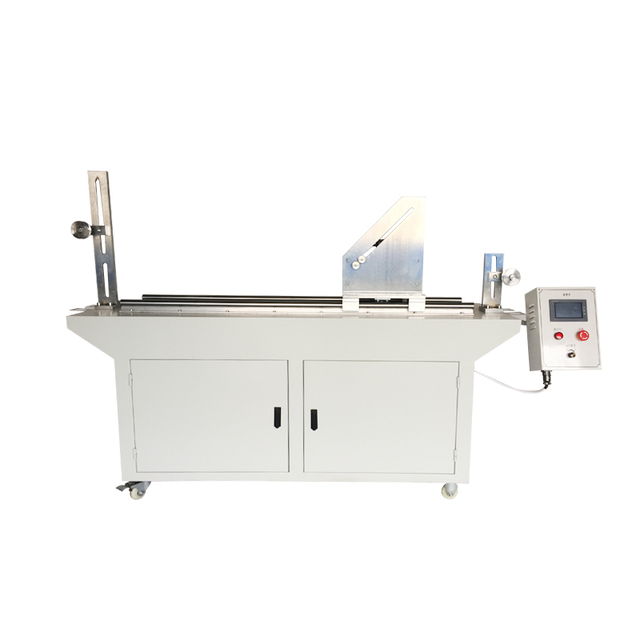flexible cable flexing test equipment
Understanding Flexible Cable Flexing Test Equipment
In the modern world, flexible cables are essential components of various electrical and electronic systems. They provide connectivity, power, and communication between devices, making them a vital aspect of infrastructure across industries. However, the performance and reliability of these cables are largely contingent on their ability to endure mechanical stress and bending. This is where flexible cable flexing test equipment comes into play, ensuring that cables are up to standard before they are deployed in critical applications.
Importance of Flexing Tests
Flexible cables are subjected to constant movement, twisting, and bending in their operational environments. This can lead to fatigue and eventual failure if the cables are not adequately tested for their flexibility and durability. Flexing tests simulate real-world conditions that cables experience, helping manufacturers identify weaknesses in their designs and materials. By assessing how cables behave under duress, engineers can make informed decisions about improvements that might be needed to enhance performance.
Overview of Flexing Test Equipment
Flexible cable flexing test equipment comprises various apparatus designed to evaluate the mechanical properties of cables
. Typically, these machines replicate bending, twisting, and flexing motions while measuring parameters such as resistance to bending, conductor integrity, insulation durability, and potential failure points.Key components of flexing test equipment include
1. Bending Mechanism This is the core part of the testing apparatus that allows cables to undergo controlled bending. Various designs exist, such as rotary bending machines or reciprocating systems, ensuring that the cable experiences a range of motions that reflect actual usage scenarios.
flexible cable flexing test equipment

2. Measurement Systems Advanced flexing test equipment often comes equipped with sensors and data acquisition systems that measure current flow, voltage drop, and mechanical strain on the cable during testing. These data points are crucial for understanding how the cable can perform under repeated flexing.
3. Control Systems Modern flexing test machines are automated, allowing for precise control over the speed and angle of flexing. This is critical for conducting standardized tests that can be replicated for quality assurance.
4. Software Analysis Tools The integration of software tools enables engineers to analyze the collected data efficiently. They can generate reports, visualize performance trends, and highlight areas needing improvement.
Testing Standards
Most industries adhere to specific testing standards when evaluating flexible cables. These standards, which may vary by industry or application, ensure that cable manufacturers meet acceptable performance levels. Commonly referenced standards include IEC 60811 for insulation and sheath materials, and UL 62 which addresses the safety of flexible cords and cables.
Testing with flexing equipment typically complies with these standards, giving manufacturers assurance that their products are reliable. Successful performance in these tests boosts the credibility of the cable, which can be a decisive factor for customers during the purchasing process.
Conclusion
Flexible cable flexing test equipment is a cornerstone of cable manufacturing and quality assurance. By simulating the physical stress that cables endure in real-world applications, this equipment helps ensure the longevity and reliability of flexible cables. With advancements in technology and the ongoing evolution of testing standards, manufacturers are better equipped than ever to produce cables that meet the demands of modern applications. Investing in high-quality flexing test equipment ultimately leads to safer, more durable products that can withstand the rigors of their intended environments, thereby improving customer satisfaction and reducing the risks associated with cable failures.
-
Why the Conductor Resistance Constant Temperature Measurement Machine Redefines Precision
NewsJun.20,2025
-
Reliable Testing Starts Here: Why the High Insulation Resistance Measuring Instrument Is a Must-Have
NewsJun.20,2025
-
Flexible Cable Flexing Test Equipment: The Precision Standard for Cable Durability and Performance Testing
NewsJun.20,2025
-
Digital Measurement Projector: Precision Visualization for Modern Manufacturing
NewsJun.20,2025
-
Computer Control Electronic Tensile Tester: Precision and Power for the Modern Metal Industry
NewsJun.20,2025
-
Cable Spark Tester: Your Ultimate Insulation Assurance for Wire and Cable Testing
NewsJun.20,2025
 Copyright © 2025 Hebei Fangyuan Instrument & Equipment Co.,Ltd. All Rights Reserved. Sitemap | Privacy Policy
Copyright © 2025 Hebei Fangyuan Instrument & Equipment Co.,Ltd. All Rights Reserved. Sitemap | Privacy Policy
